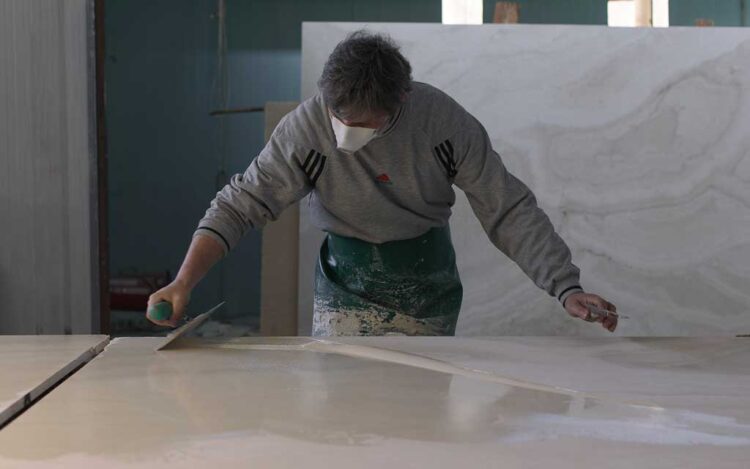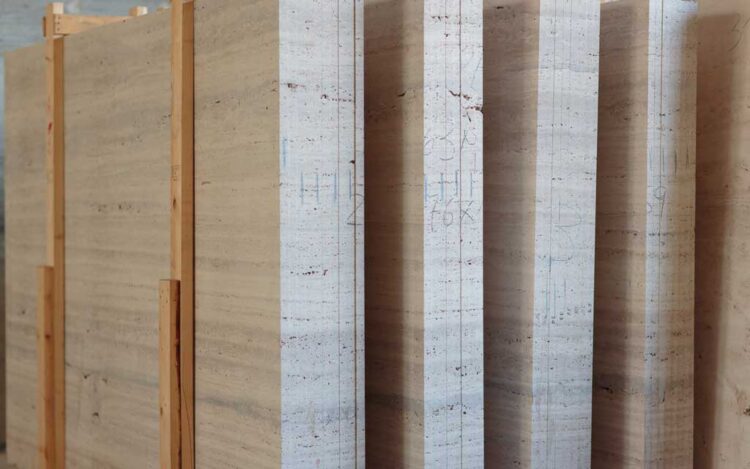Osso Cross Cut Roman Travertine
Material: Roman Travertine
Origin: Tivoli, Italy
Availability: Blocks, Cut to size
Suggested finishes:
saw cut, honed and stone color filled, honed and unfilled
Suggested processing:
mosaics and patterns, mesh net
General description
Travertine Osso owes its name to human anatomy. The Osso (“bone” in English), is the purest form of travertine stone one can find in nature. It is a delicate material, precious and rare extracted only in the quarries located in Tivoli.
Travertine is considered a resistant stone, compact and durable, and yet Osso is praised especially for its peculiar thinness: a pure material with a dense white hue destined for the brightest example of artistry and dexterity. Tiles and works of art in particular emphasize the finesse of this natural stone.
Its translucent look evokes freshness, vitality, and reinvigorating feelings. Travertine Osso is recommended for furnishing objects and interior decorations. Light natural stones are a must-have for interior designs furnished according to modern and minimalistic aesthetics. The core philosophy of modern style aims for clear and airy rooms, and neutral tones help play up the optical illusion of a boundless space.
Osso travertine recalls human power, the complex structure of nerves, flash and veins, interlaced in a great system of relationship and connection, and supported by the skeleton. Like for human beings, natural stones as travertine are composed of different physical elements, are crossed by veins, and sustained by their very own kind of skeleton: the quarries.
This enchanting kind of travertine is at the service of human creativity. It is perfect for expressing the home owner’s sensibility and their strong connection with nature.
Technical Specifications Roman Travertine Osso
1) Flexural strength (UNI EN 12372)
1a) Load perpendicular to asiontropic planes
| Mean Fleaxural Strength | Standard deviation |
| 10,8MPa | 2,6Mpa |
1b) Load perpendicular to corners of asiontropic planes
| Mean Fleaxural Strength | Standard deviation |
| 11,7MPa | 1,3Mpa |
2) Freeze-thaw resistance (UNI EN 12371)
2a) Load perpendicular to asiontropic planes
| Mean Fleaxural Strength | Standard deviation |
| 7,4MPa | 1,8Mpa |
2b) Load perpendicular to corners of asiontropic planes
| Mean Fleaxural Strength | Standard deviation |
| 8,7MPa | 1,1Mpa |
3) Slip Resistance (UNI EN 1341)
| Mean Slip Resistance, Single Sample |
| 64 |
4) Abrasion Resistance (UNI EN 1341)
| Mean Abrasion Resistance |
| 26,8 |





